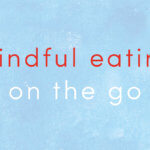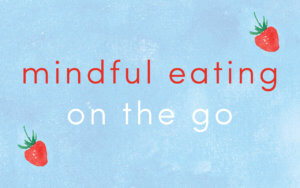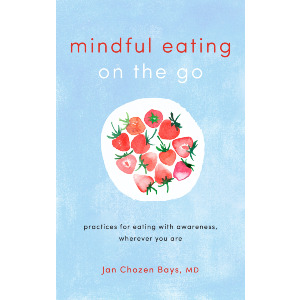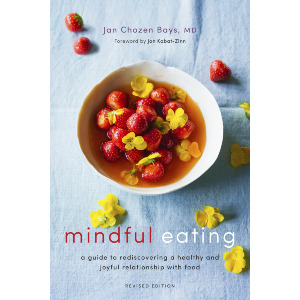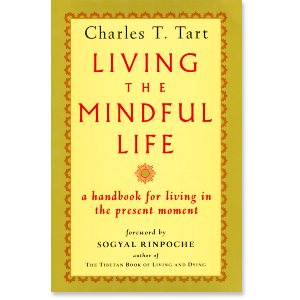Trying a New Fruit
The Exercise
Find a fruit you have never eaten. An Asian food market is a good place to look. Star fruit, lychee, kiwano, rambutan, papaya, custard apple, mangosteen, and dragon fruit are some possibilities. At a Mexican market look for mamey, guanabana, sapote, chico, or pitahaya. Ask to make sure they are ripe.
Sit down with the new fruit and investigate it with all your senses, using the Nine Hungers as a guide. (This is a great way to introduce mindful eating and the nine aspects of hunger to children.) Take it in with your eyes, like a piece of sculpture. For each hunger, ask, “What do I notice? How would I describe this to someone else?” Next, cut it open. What do you see? Smell it. Touch the outer skin and inner fruit. Take a piece in your mouth and roll it around a bit so you can distinguish the flavors. Put full attention in your mouth as you chew and swallow. Does your mouth want more? Now ask your stomach if it wants more. Ask your cells or organs if they like this fruit. Ask your mind if it wants you to try more. Why or why not? Ask your heart if it finds this fruit soothing or comforting.
Reminding Yourself
Put “new fruit” on your shopping list. Or post on your social media a photo of fruit and your experience with eating it mindfully.
Discoveries
If you lived one thousand years ago, you would have no scientific equipment to analyze the nutritional content of a potential food. You would have only the experience of your sense organs and the experience of others. (“Don’t eat that fruit. It made Joe sick and die.”) If you buy a strange fruit or vegetable in a modern market, you have the assurance that many people have tried it, liked it, and survived, and that there is even a demand for it.
I suggested an unknown fruit because humans are born with a liking for sweet foods. Also, you can eat a fruit raw. You could also try this exercise with unknown vegetables such as kohlrabi, chayote squash, oca tubers, tamarillo, or romanesco, but you will need to find out how to prepare and cook them (something easily done on the internet).
When I try this exercise with children, some are courageous and eager to investigate. “Oh, cool! This is going to be fun!” And some are timid or resistant. “It looks yucky. I’m not going to taste it.” When they see another child try a bite and enjoy it, however, they may join in. We have those same voices inside our adult heads too. We can all fall into the safe habit of eating the same thing over and over.
We think we have certain innate food preferences, but the only inborn preferences are a liking for sweet and an aversion toward bitter flavors. We are conditioned to like certain foods. This begins with what our mothers ate before we were born. Amniotic fluid takes on the flavor of foods the mother eats, so what mother eats, baby tastes. If mothers eat particular foods or spices, such as garlic, their babies will prefer those foods and flavors after they are born. As the food writer and author Bee Wilson said in a 2016 episode of Fresh Air, “Imagine swimming around in that [garlicy amniotic fluid] for nine months. That baby will grow up to love garlic . . . It feels like home, it tastes like home.”
The same is true of breast milk. In one study, when mothers drank carrot juice in the last weeks before giving birth or when breastfeeding, their infants later more readily accepted and showed more enjoyment of carrot-flavored cereal than infants who were not exposed to carrot flavor in their amniotic fluid or breast milk. Perhaps forever after, carrots will taste like love.
Deeper Lessons
Our attitude toward eating a new fruit can reveal something about our attitude toward life. Buddhists divide people into three categories, based upon the “three poisons”: greed, anger, and ignorance. These three, if allowed to run unchecked, can poison our experience of life and bring much suffering to us and those around us.
A person who is a “greed” or desire type loves novelty, variety, and new experiences. They might be excited about the opportunity to try an unknown fruit. However, the downside is that they are easily bored and can feel restless and unhappy if the menu of life is not always bringing new “tastes.” The positive side of greed is a strong desire to learn.
A person who is an “anger” type is averse to change and novelty. They might be cautious about trying an unknown fruit. They often react to new ideas or suggestions with, “Yes, but . . . ” or with a reason why it won’t work. The downside is that they make decisions according to what is the least aversive alternative rather than for positive reasons, and can become depressed, with a constricted life. The positive side of aversion is appropriate caution in the face of something new.
A person who is an “ignorance” type reacts to new situations with indifference, apathy, or dissociation, saying, “Whatever . . .” or “I can’t be bothered to try.” They might choose to remain uninvolved in the exercise of trying a new food. The downside is that they miss out on new experiences and, most important, they can miss out on the experience of being present for their life—the difficulties, lessons, and joys of a unique human life. The positive side of ignorance is “beginner’s mind” and the willingness to not know.
Once at the monastery I presented this typology of personality types. One person said, “That is so interesting, I’d like to read more about it.” The next person said, “I don't agree with that at all.” I asked someone who was silent what she thought, and she said, “Huh? Oh, I didn’t really pay attention to what you were saying.” Everyone else laughed.
Each type has its own basic strategy for being safe, successful, and loved in life. All of us have aspects of all three, but can you tell—even from your eating habits—which type sounds like you? Do you crave new tastes and eating experiences? Are you averse to many or new foods? Do you check out while eating and retreat into thoughts about past and future or fantasies? Would you like to change or expand your strategy?
Final Words
Our attitude toward new foods can reveal our underlying strategies for life. Awareness of our own strategies brings choice, and choice brings freedom, including the choice to be compassionate toward other people who are also boxed in by old strategies.
Our attitude toward eating a new fruit can reveal something about our attitude toward life.
Eating with the Non-Dominant Hand
The Exercise
For one week try eating at least part of each meal with your non-dominant hand. You can expand this to include all drinks and more meals each day. If you’re up for a big challenge, try using the non-dominant hand to eat with chopsticks.
Reminding Yourself
Put a picture of a hand with an X through it in your lunch box or near where you usually eat. Or put a Band-Aid on your dominant hand or a rubber band around your wrist to remind you to switch to using your non-dominant hand. You could also place a sign where you eat that says “left hand” (if you are right-handed). Or use an unusual color of nail polish on your non-dominant hand, to signal, “use me!”
Discoveries
This experiment always evokes laughter. We discover that the non-dominant hand is quite clumsy.
This exercise takes us back to what Zen teachers call “beginner’s mind.” Our dominant hand might be forty years old, but the non-dominant hand feels much younger, perhaps about two or three years old. We have to learn all over again how to hold a fork and how to get it into our mouths without stabbing ourselves. We might begin to eat with the non-dominant hand, and then, when our attention wanders, our dominant hand will reach out and take the fork away. It’s just like a bossy older sister who says, “Hey, you little klutz, let me do it for you!”
You can have more fun if you use your non-dominant hand for other everyday tasks such as brushing your teeth or hair, opening doors, writing, or cutting with scissors. You can also try switching the usual roles that each hand plays when they work together. Have the non-dominant hand wield the hammer and do the pounding while the dominant hand holds a nail, or reverse the hands while stirring a pot of food or washing dishes. I’ve discovered that my right hand is skilled in fine motor movements, but my left hand is the less intelligent “strong woman” who can better hold a baby on my hip or steady the cheese grater while the right hand grates the cheese.
Struggling to use the non-dominant hand can awaken our compassion for anyone who is clumsy or unskilled, such as a person who has had disabilities, injuries, or a stroke. We see briefly how we take for granted scores of simple movements that many people cannot make.
Researchers speculate that one reason that obesity is less common in countries like Japan is that when you eat with chopsticks, you must take small bites. Using chopsticks with the non-dominant hand is a humbling experience. If you want to eat a meal in under an hour and not end up spilling food all over, you have to be very attentive.
Deeper Lessons
Using the non-dominant hand reveals our impatience. Isn’t it interesting that we become impatient with eating, one of the most pleasurable activities we humans engage in? Why are we anxious to get it over with quickly? It’s self-defeating!
If each person has one major lesson for each lifetime, mine would be impatience. I’ve investigated impatience by asking, impatient to get to what? I’m impatient to finish breakfast so I can do what? E-mails. I’m impatient to finish e-mails so I can get to . . . working on this book . . . finishing a ceramic statue . . . eating lunch . . . lying down for a nap. . . . If I continue to carry this forward I discover that I’m impatient to eventually get to what . . . my death?! That realization jolts me back into a more vivid experience and enjoyment of this moment of life, a life I am not at all impatient to leave.
If you step back and simply observe how your two hands work together as a team in routine tasks such as eating or washing dishes, you will see that they work together beautifully, quietly and continually caring for you. If everyone in the world worked together in this way, aiding and supporting one another as they cared for the life of this earth, the world would be an entirely different place.
Using the non-dominant hand can help us become more flexible and discover that we are never too old to learn new tricks. If we practice frequently, over time we can watch our skill develop. I have been practicing using my left hand for several years, and I now forget which hand is the “right” hand to use. This could have practical benefits. If I lose the use of my dominant hand, as a number of my relatives did after strokes, I won’t be “left” helpless. When we develop a new skill, we realize that there are many other abilities lying dormant within us.
Final Words
Simply using your non-dominant hand can invoke beginner’s mind and open a world of interesting discoveries.
Isn’t it interesting that we become impatient with eating, one of the most pleasurable activities we humans engage in?
One Bite at a Time, or Put Down That Utensil!
The Exercise
This is a mindfulness practice to do whenever you are eating. After you take a bite, put the fork or spoon back down in the bowl or on the plate. Place your awareness in your mouth until that one bite has been enjoyed and swallowed. Only then do you pick up the utensil and take another bite. If you are eating with your hands, put the sandwich or apple or cookie down between bites.
Reminding Yourself
Post notes saying “one bite at a time” wherever you eat, or an icon of a spoon or fork with words “Put it down!”
Discoveries
This is one of the most challenging of all the mindful eating practices we do at our monastery. In attempting this exercise, most people discover that they have the habit of “layering” bites of food. That is, they put one bite in the mouth, divert their attention away from the mouth as they shovel food onto the fork or spoon for the next bite, then put a second bite in the mouth before the first one is swallowed. Often the hand is hovering in the air, with another bite halfway to the mouth, as the preceding bite is chewed. They discover that as soon as the mind wanders, the hand assumes control again, putting new bites of food in along with partially processed bites. It is amazing how hard this simple task can be. It takes time, patience, persistence, and a sense of humor to change long-term habits.
Manufacturers of foodlike substances are well aware that we like the hit of intense flavor and texture sensations that occur as soon as we take the first bite of food. They are also aware that as soon as those sensations begin to fade, we will take another bite. And another. The more quickly the sensations disappear, the more of their product we will mindlessly consume. You can try this for yourself. Pick something like cheese puffs or a variety of potato chips that are coated with flavor dust. Put one in your mouth and let it sit there. You can roll it around with your tongue, but don’t chew it. What happens to the initial crispy texture and bright flavor? How long does it take for it to become uninteresting or even repulsive? What is your impulse when that happens?
A nurse told me about a woman who was learning to chew her food well, one bite at a time, a necessity following her bariatric surgery. The woman was surprised at what a difference it made, how it enriched and expanded her experience of eating, and said, “If I’d learned this earlier, I wouldn’t have needed the surgery!”
Putting down your utensil between bites used to be part of good manners. It counteracts the tendency to wolf down our food. One person exclaimed after trying this task, “I just realized that I never chew my food! I swallow it almost whole, in my haste to get the next bite in.” She had to ask herself, “Why am I in such a rush to get through a meal, when I enjoy eating so much?”
Deeper Lessons
This is another exercise in which we become aware of impatience. Eating quickly, layering one bite on top of another, is a specific example of impatience. Doing this practice may lead you to watch impatience arise in other aspects and occasions in your life. Do you get impatient when you have to wait? We have to ask ourselves, “Why am I in such a rush to get through life, when I want to enjoy it so much?”
Experiencing one bite or one swallow at a time is a way of experiencing one moment at a time. Since we eat or drink at least three times a day, this mindfulness practice gives us several built-in opportunities to bring mindfulness into each day. Eating is naturally pleasurable, but when we eat quickly and without mindfulness, we don’t enjoy it. Research shows that people eat their favorite foods more quickly. Binge eaters also report that they keep on eating in a vain effort to re-create the pleasure of the first bite. Because the taste receptors tire quickly, this will never work. If we want the flavors in each bite to be clear, we need to pause a bit to refresh our taste buds.
When the mind is absent, thinking about the past or future, we are only half tasting our food. When our awareness rests in the mouth, when we are fully present as we eat, when we slow our eating, pausing between bites, then each bite can be like the first, rich and full of interesting sensations.
Final Words
Pursuing pleasure without mindfulness is like being caught on a treadmill. You eat more but enjoy it less. Mindfulness allows pleasure to bloom in thousands of small moments in your life.
Experiencing one bite or one swallow at a time is a way of experiencing one moment at a time.
Related Books
$12.95 - Paperback
$16.95 - Paperback
$12.95 - Paperback
$24.95 - Paperback


